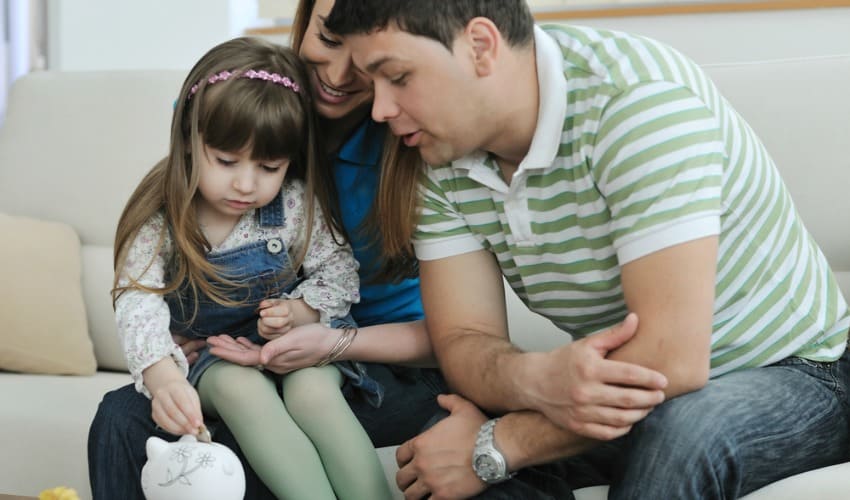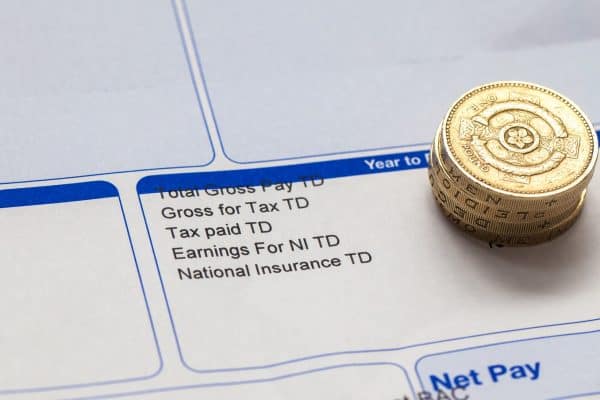Children are easily influenced and motivated by the things we teach them. As role models, it’s our job to instil positive life skills that will benefit them throughout their lives, and money management is a vital part of adulthood. Here’s how you can teach your child to become a savvy spender.
Teach them early
Teaching your children about money as soon as they’re old enough to recognise what it is can be a great way to instil good habits that last a lifetime. Some parents are reluctant to do this as they don’t want their children to worry about ‘adult pressures’ at such an early age. However, the Money Helper says, ‘helping your child to understand and respect money from an early age will help them manage it better when adult’. They suggest, ‘Start by letting your child see and handle notes, coins and cards, so they become familiar with money as a part of everyday life.’

You could also make the idea of spending more relatable by talking to your child about how their favourite TV characters use money. Discuss how much their activities would cost and how long it would take them to save their pocket money. You can also look at which characters spend money sensibly and which ones waste it.
Read more: Pocket Money: A Guide For Parents
It won’t last forever
There’s a reason ‘money doesn’t grow on trees’ is such a popular saying with parents everywhere. Because it’s true! Sometimes it’s hard for children to comprehend the concept of money and where it comes from. It’s important to teach your child that, with money, once it’s gone, it’s gone. Consideration is key when it comes to spending, which is why you should guide your child to make sensible choices when deciding what they want to spend their money on.
Budgeting
This aspect of money management can be difficult even for adults. But, sticking to a budget is an excellent way to get your child to fully consider if they really want an item. Kidspot says, ‘Your kids might say they NEED a new toy each week. If they have to spend their own money to buy it they’ll soon find out how expensive it can be. It’ll help them recognise that buying a new toy is a WANT, not a NEED.’

This practice can teach children how to prioritise what they are spending. It also highlights that saving isn’t always easy and it takes time and hard work to get the things you want. Clinical Psychologist, Dr Elizabeth Kilbey says:
‘First, they must save it, then spend it, then experience the euphoria that comes from buying the item they wanted, but also what it feels like to lose some money in the process. This will reinforce the idea that it must then be saved again.’
Allowing your child to experience all the emotions associated with money management is one of the best ways of letting them learn.
Related: What You Can Learn From The Spending Habits of 7 Frugal Millionaires and Billionaires
Getting good value
Another big money lesson is getting more bang for your buck, or, not being ripped off. Children are easily swayed by colourful packaging, and flashy TV ads, not to mention they’ll want whatever their friend has. But, sometimes we just can’t face paying through the nose for a tiny toy or a certain brand of yoghurt.

A useful exercise is to take your child to the supermarket with you and compare the prices of equivalent items. For example, show them an expensive, branded product they want for their packed lunch. Then, show them the own brand alternative and how much more they could get for the same price. Help them to work it out and allow them to pay for their items at the till so that they feel accomplished in the exercise. This can highlight the art of getting great value and hopefully turn them into mini savvy shoppers.
How do you teach responsible spending to your child? Let us know in the comments!



















